If you’re considering new insulation for your home, you have lots of options to consider. Do your needs call for a simple thermal envelope, or would you like sound-deadening or air-sealing properties, too? This article offers a brief survey of six common insulation materials, their pros and cons, and an estimated installation price.
Spray Foam Insulation
Polyurethane spray foam is the most effective form of insulation, essentially stopping air movement, but the cost can be a significant drawback.
Open-cell foam (bubbles that burst) expands to fill any cavity but has a lower R-value and can transmit moisture. Closed-cell foam retains bubble integrity, creating a complete air, water and vapour seal.
Cost
$2.50 per square foot or $2,208 total price (average in Toronto).
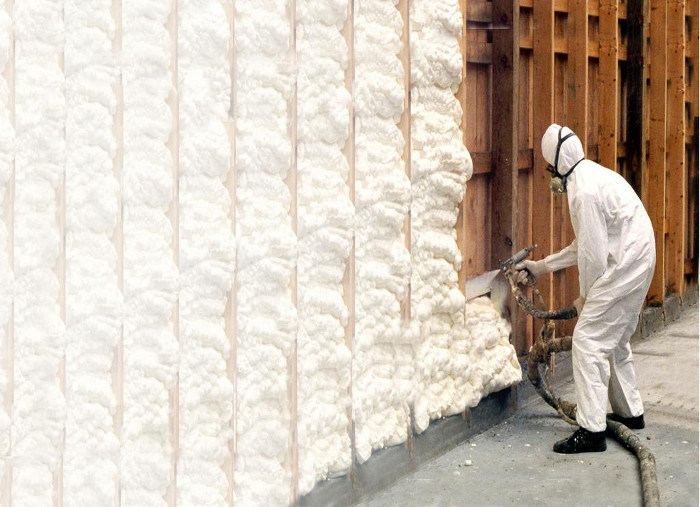
Pros
- Highest insulation value per inch (R6)
- Air barrier, vapour barrier and insulation all-in-one product
- Lasts forever
- Can be applied to any surface, regardless of location
- Reduces sound transmission
Cons
- Installation produces toxic gasses, creates a mess and leaks through unsealed joints and openings
- Requires a specialized subcontractor with specific training and experience
- More expensive than other insulation
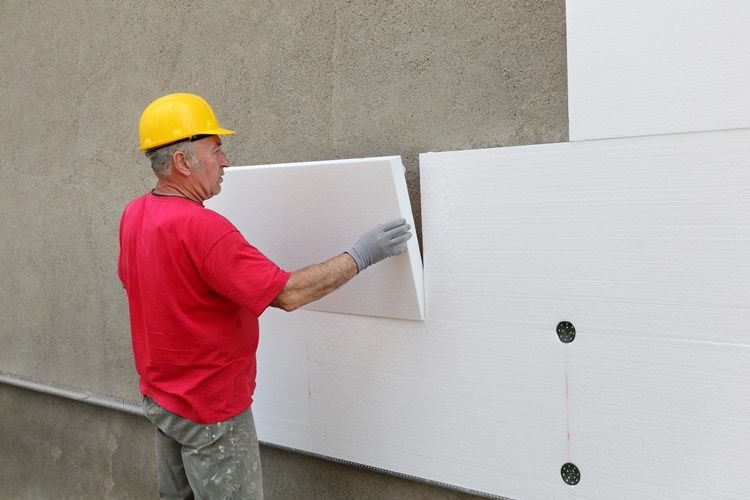
Rigid Foam Insulation
Rigid foam is a combination of easy installation with an R-value that’s almost as good as spray foam. It comes in three primary styles: expanded or extruded polystyrene and polyisocyanurate. All rigid foam is moisture-resistant, but extruded foam sheets perform well when encountering exterior exposure.
Pros
- Only style of insulation that blocks thermal conduction through structural elements
- Installation requires no special equipment or personal protective equipment
- Mid-priced, between spray foams and low-cost blown and batt styles
Cons
- Must cut to fit around wiring and pipes, then seal all cuts and joints
- Can’t use it for structural elements
- Many foams must be covered with drywall in living spaces
Fibreglass Batt Insulation
Fibreglass is the most common and cost-effective form of insulation available today. Batts are designed to fit between wall studs and ceiling rafters and are available in different thicknesses. They provide thermal resistance values from R12 to R40, which can be increased even more if they are stacked on top of each other. Even though they requires extra care to fit around pipes and wiring, compression does not reduce their performance very much.
Batts are also available in cotton or mineral wool (rockwool).
Cost
$1.19 per square foot or $2,091 total price (average in Toronto).
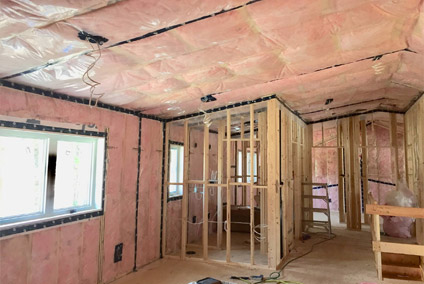
Pros
- Cost-effective and easy-to-install
- Optional facing supports vapour barrier
Cons
- Glass fibres can irritate lungs, eyes and skin, which can cause lung-health issues
- Performance suffers with poor installation (rips, tears and open spaces)
- Heat conduction possible through structural elements
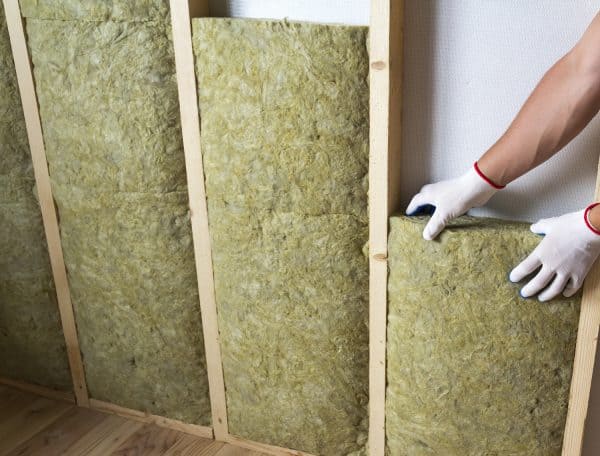
Rockwool Batts
Rockwool batts have a higher density than traditional batt insulation and lower air infiltration. They are a great sound barrier in walls or floors, mould-resistant, and have a high fire rating.
Blown Insulation
Commonly composed of fibreglass or cellulose, the small particles of blown insulation cover joists, fill voids and cavities, and insulate existing walls with minimal impact and to any desired depth. Cellulose fibres are credited as being environmentally friendly because they are manufactured from recycled paper products (fire retardants are added reduce flammability).
Cost
$1.59 per square foot or $1,796 total price (average in Toronto).
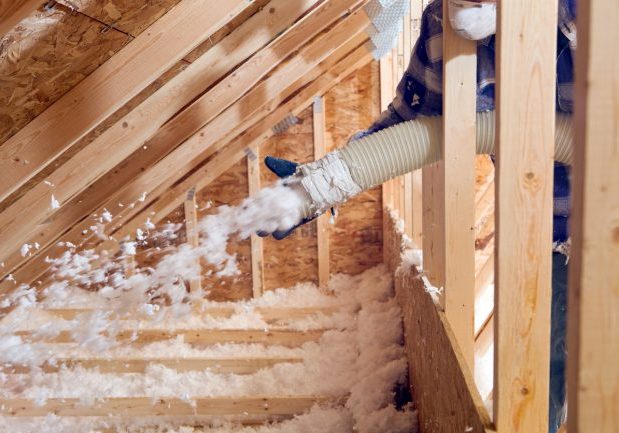
Pros
- Least expensive insulation and easily fills around pipes and ductwork
- Ease of installation and flexibility
- Very effective for wall cavities, flat attic spaces and retrofit situations
- Can be reused by collecting with a vacuum and relocating
- Settling characteristics can be an advantage in attics
Cons
- Like batts, fibreglass dust can irritate lungs, eyes and skin
- Too heavy for some ceiling styles
- Holds moisture, affecting performance and encouraging mould
- Settling characteristics can be a disadvantage in walls
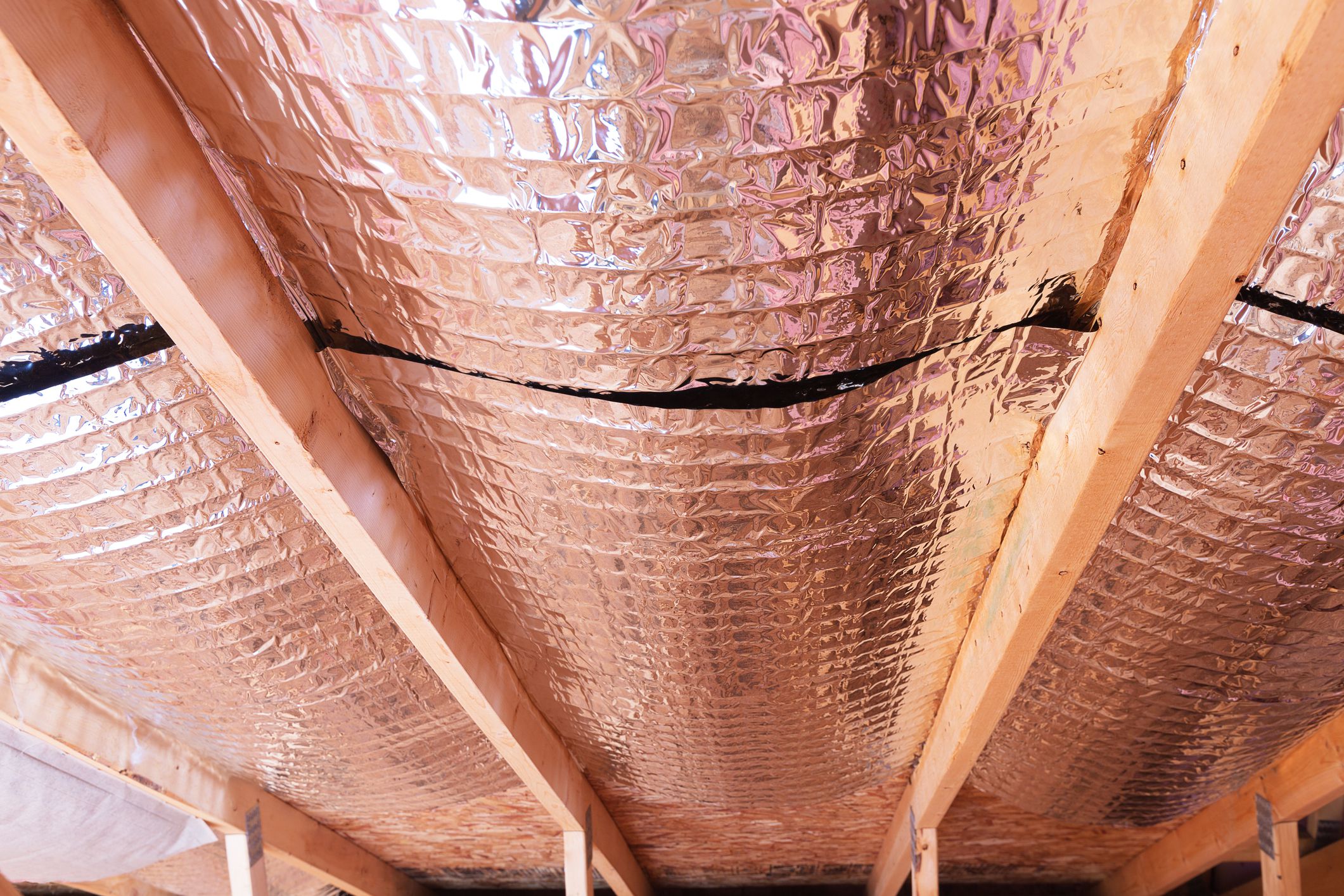
Reflective Insulation
Reflective insulation works differently from the other types of insulation. Spray foam and batts block heat loss through the air, and rigid foam can be used to block heat moving directly through building materials. Reflective insulation, on the other hand, stops heating from radiating away from a house. Similar to how an insulated thermos works, it can reduce the amount of heat that radiates from the undersides of roofs and other places where heat loss does not involve airflow or direct contact.
Because reflective insulation can’t be the only insulation for houses in cold climates, it’s sometimes added to rigid foam as a foil layer.
Pros
- Best used in warm climates to reflect heat
- Good for wrapping pipes and ductwork
- Easy to install and provides a vapour barrier
- Does not deteriorate or compress
Cons
- Can’t be the only insulation in cold climates
- Dirt build-up reduces performance
The House
Explore the different components of the house.

